Vermeer’s works: the most beautiful paintings and where to find them
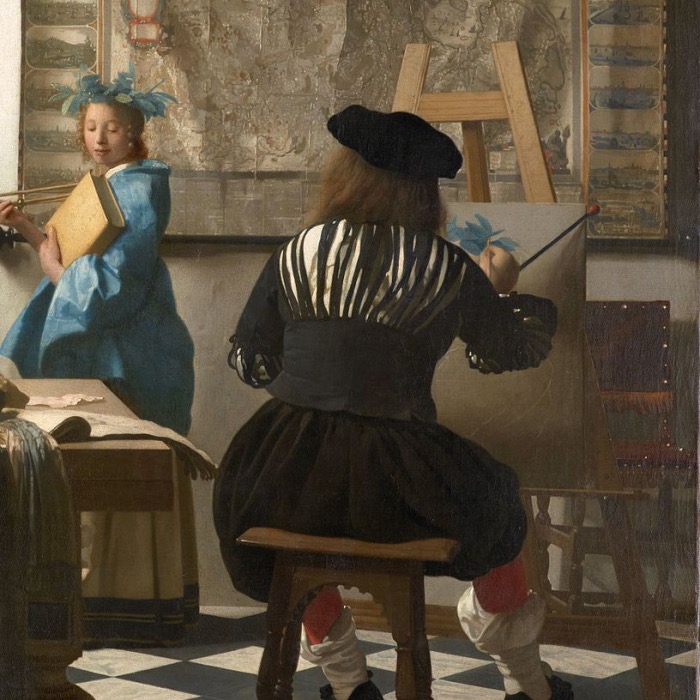
VERMEER’S WORKS: THE MOST BEAUTIFUL PAINTINGS AND WHERE TO FIND THEM
Vermeer’s works to see to know the exponent of a painting based on the depiction of scenes of ordinary life.
Only very few works by Johannes Vermeer have survived.
It’s said that they are only 36 and most depict domestic interiors with people doing ordinary activities.
In this post you’ll find the most important works by Vermeer, useful information about where you can admire them and some curious facts about the life of the Dutch artist.
Vermeer’s works
VERMEER’S WORKS: THE MOST BEAUTIFUL PAINTINGS AND WHERE TO FIND THEM
The subjects of Vermeer’s works are common to other painters contemporary with him, but his paintings seem to forerun photography and describe Dutch houses of the 17th century.
The Milkmaid (around 1659)
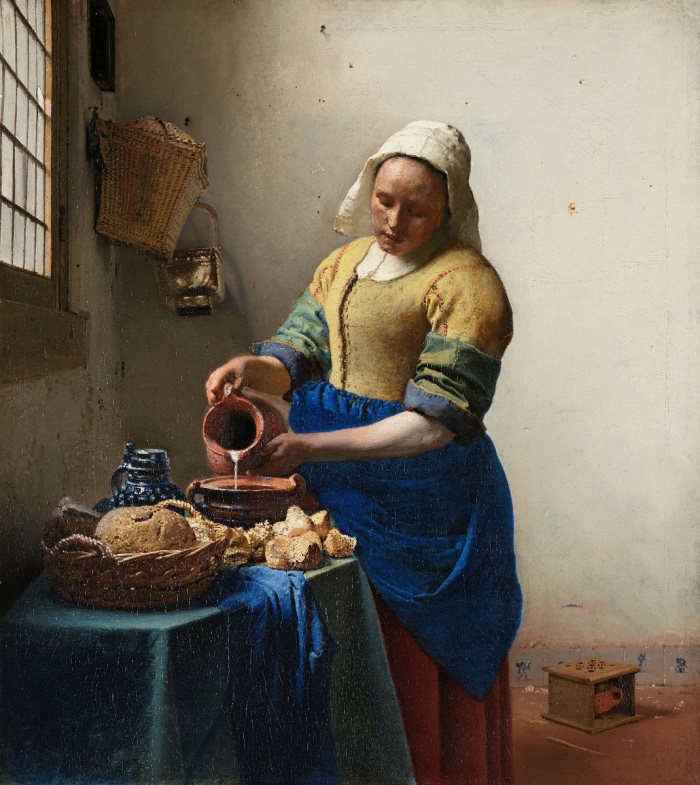
The Milkmaid by Vermeer
The light coming from the window surrounds the entire room, drawing our attention to the woman pouring some milk from a jug.
All the objects in the room are described accurately, but it’s the atmosphere created by Vermeer that attracts our attention. It seems that everything is happening in absolute silence, and this is one of the features common to all his paintings.
- Where to find it: the painting is housed at the Rijksmuseum of Amsterdam.
View of Delft (around 1660)
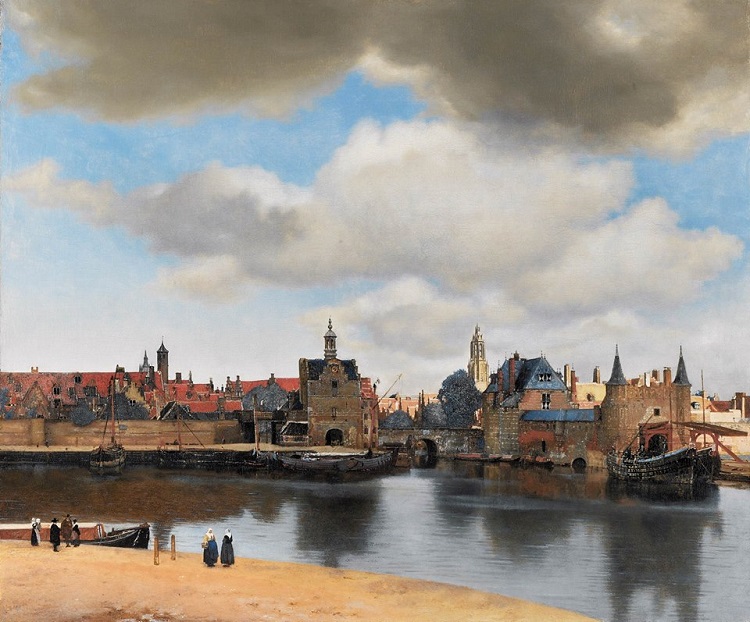
View of Delft by Vermeer
This is one of the rare Vermeer’s paintings in which the artist’s gaze looks outside and not inside a house. It portrays a view of the port of Delft which looks a lot like works by Canaletto or Bernardo Bellotto. In fact, scholars believe that Vermeer used a camera obscura, an instrument used by artists of Vedutismo.
- Where to find it: the painting hangs in the Mauritshuis museum in The Hague.
Head of a Girl with a Turban by Vermeer (around 1665)
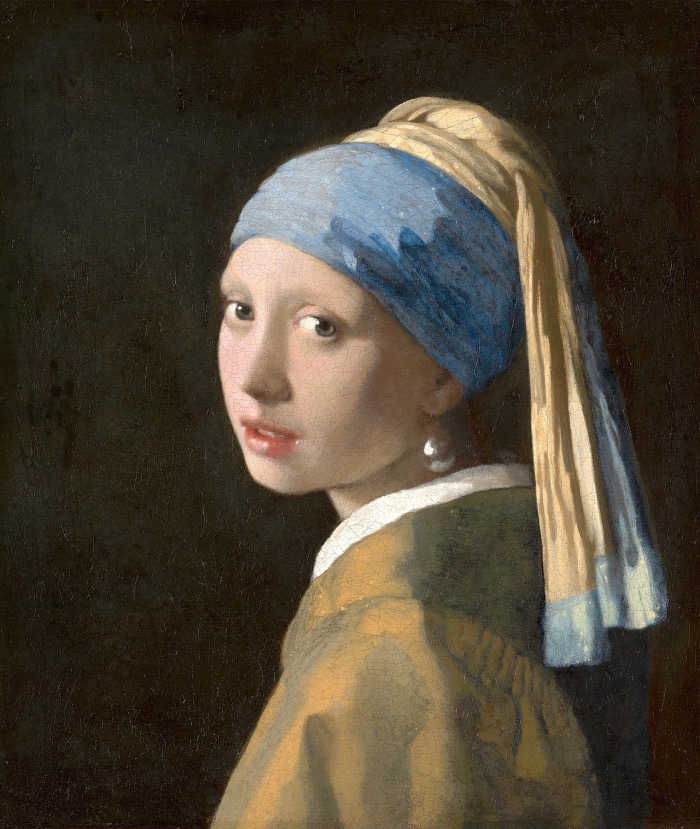
This painting is known as The Girl with a Pearl Earring, thanks to a successful novel which built a charming story about this painting.
The first news about the work dates back to 1881, when it was acquired by an art collector at a low price.
But that collector saw something unique in that portrait.
- Where to find it: the painting was bequeathed to the Mauritshuis museum by the art collector himself who bought it in 1881.
The Allegory of Painting (around 1666)
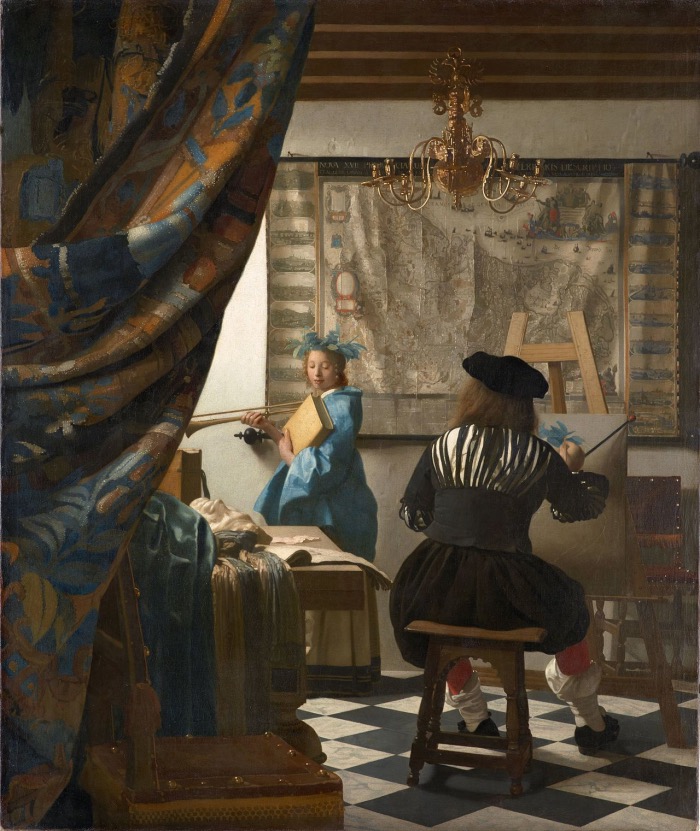
The Allegory of Painting
According to some documents, when Vermeer died his wife Catharina Bolne bequeathed a painting entitled “The Art of Painting” to her mother.
Officially, it was a repayment, but it was maybe just an attempt to save the painting from the auction sale to satisfy creditors. Anyway, the painting was sold at auction.
It was probably a family heirloom and the artist portrayed from behind was Vermeer himself.
More about the painting in the post The Allegory of painting.
- Where to find it: the painting hangs in the Kunsthistoriches Museum in Vienna.
Follow me on:
About me
In this blog, I don't explain the history of art — I tell the stories that art itself tells.


